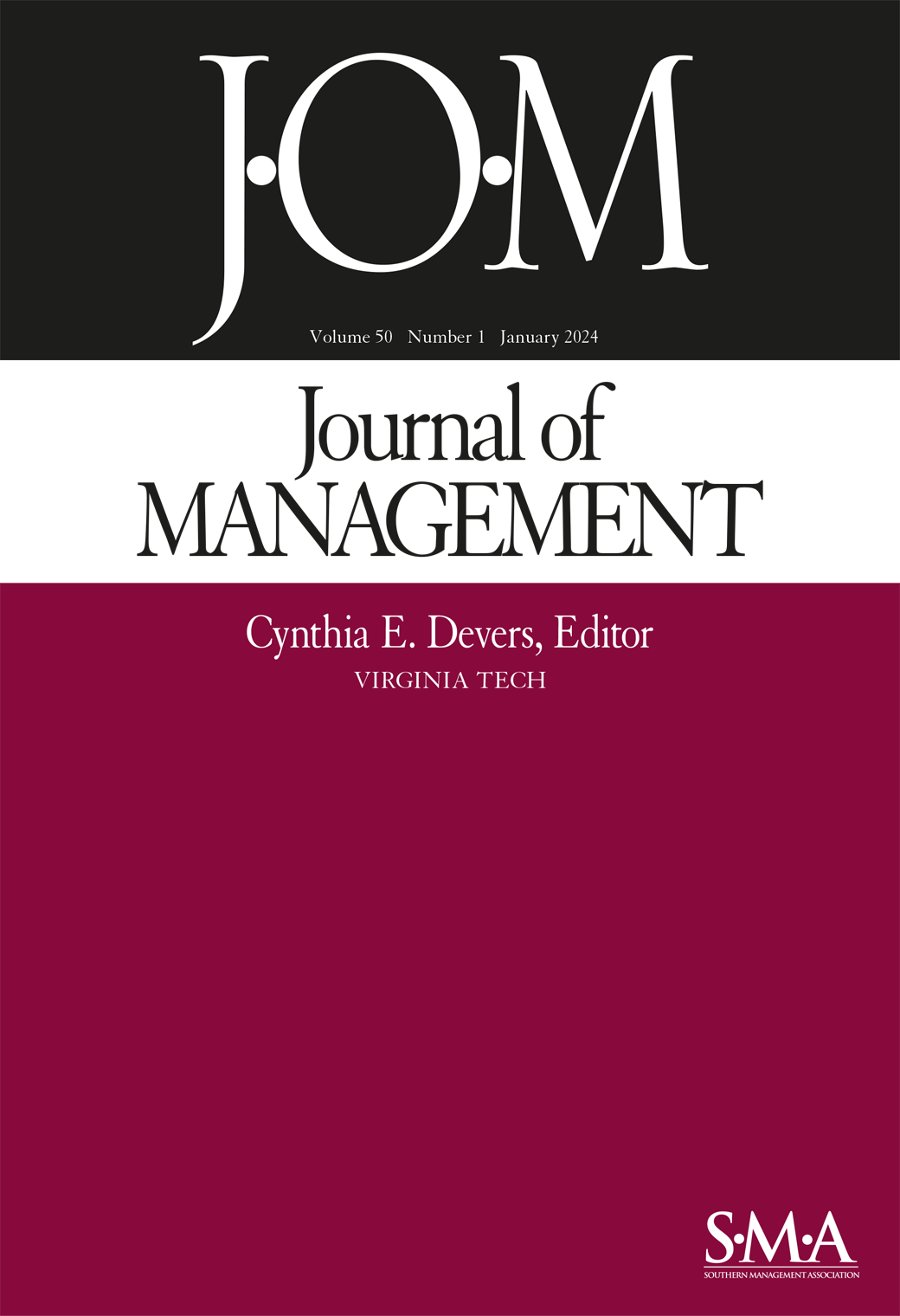We Are (Not) on the Same Team: Understanding Asian Americans’ Unique Navigation of Workplace Discrimination
IF 9
1区 管理学
Q1 BUSINESS
引用次数: 0
Abstract
Asian Americans (AsAms) carry unique group identifications that likely impact how they navigate workplace racial discrimination. Yet, extant workplace discrimination research has not thoroughly considered the implications associated with such unique group identifications, especially given the context of American society’s increasingly polarized views of AsAms as outsiders versus insiders. To gain insights into these aspects, we conducted three studies using qualitative and quantitative methods. Our qualitative interviews (Study 1) with AsAm employees during COVID-19 reveal that AsAms have internalized society’s polarization of their American and Asian group identifications and navigate their workplace discrimination accordingly. Integrating these findings with group identification research, we develop a dual-serial-mediation navigation process model, whereby AsAms with strong American group identification intend to leave their organization via blaming and then not forgiving their offenders (i.e., “suffering path”), whereas those with strong Asian group identification intend to stay in the organization via perspective taking and then forgiving their offenders (i.e., “protected path”). In a different sample of AsAms who faced workplace discrimination, we found support for our model (Study 2). Finally, we largely replicated these results in a third sample of AsAms who faced workplace discrimination and found that such navigation processes were largely unique to AsAms versus other racial-minority groups (Study 3). Theoretical and practical implications are discussed.我们(不)是一个团队的:了解亚裔美国人遭遇职场歧视的独特经历
亚裔美国人(AsAms)具有独特的群体认同,这可能会影响到他们如何应对工作场所的种族歧视。然而,现有的职场歧视研究并没有深入考虑与这种独特的群体认同相关的影响,尤其是在美国社会对亚裔美国人的看法日益两极化,将其视为外来者和内部人的背景下。为了深入了解这些方面,我们采用定性和定量方法进行了三项研究。我们在 COVID-19 期间对亚裔员工进行的定性访谈(研究 1)显示,亚裔已将社会对其美国人和亚裔群体身份认同的两极分化内在化,并据此处理工作场所的歧视问题。通过将这些发现与群体认同研究相结合,我们建立了一个双序列中介导航过程模型,即具有强烈美国群体认同的亚裔美国人打算通过责备然后不原谅他们的冒犯者(即 "受难路径")来离开他们的组织,而具有强烈亚洲群体认同的亚裔美国人打算通过透视然后原谅他们的冒犯者(即 "受保护路径")来留在他们的组织。在另一个面临职场歧视的亚裔样本中,我们发现我们的模型得到了支持(研究 2)。最后,我们在第三个面临工作场所歧视的亚裔美国人样本中基本复制了这些结果,并发现亚裔美国人与其他少数种族群体相比,这种导航过程在很大程度上是独一无二的(研究 3)。本文讨论了这些研究的理论和实践意义。
本文章由计算机程序翻译,如有差异,请以英文原文为准。
求助全文
约1分钟内获得全文
求助全文
来源期刊

Journal of Management
Multiple-
CiteScore
22.40
自引率
5.20%
发文量
0
期刊介绍:
The Journal of Management (JOM) aims to publish rigorous empirical and theoretical research articles that significantly contribute to the field of management. It is particularly interested in papers that have a strong impact on the overall management discipline. JOM also encourages the submission of novel ideas and fresh perspectives on existing research.
The journal covers a wide range of areas, including business strategy and policy, organizational behavior, human resource management, organizational theory, entrepreneurship, and research methods. It provides a platform for scholars to present their work on these topics and fosters intellectual discussion and exchange in these areas.
 求助内容:
求助内容: 应助结果提醒方式:
应助结果提醒方式:


